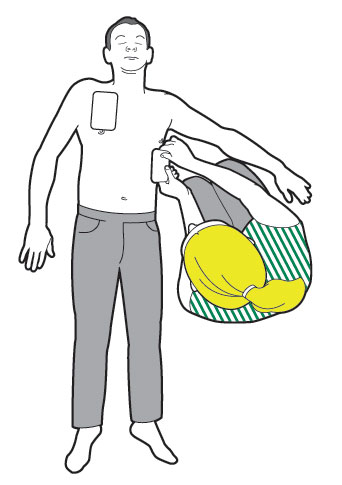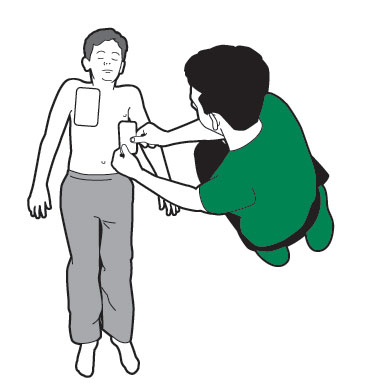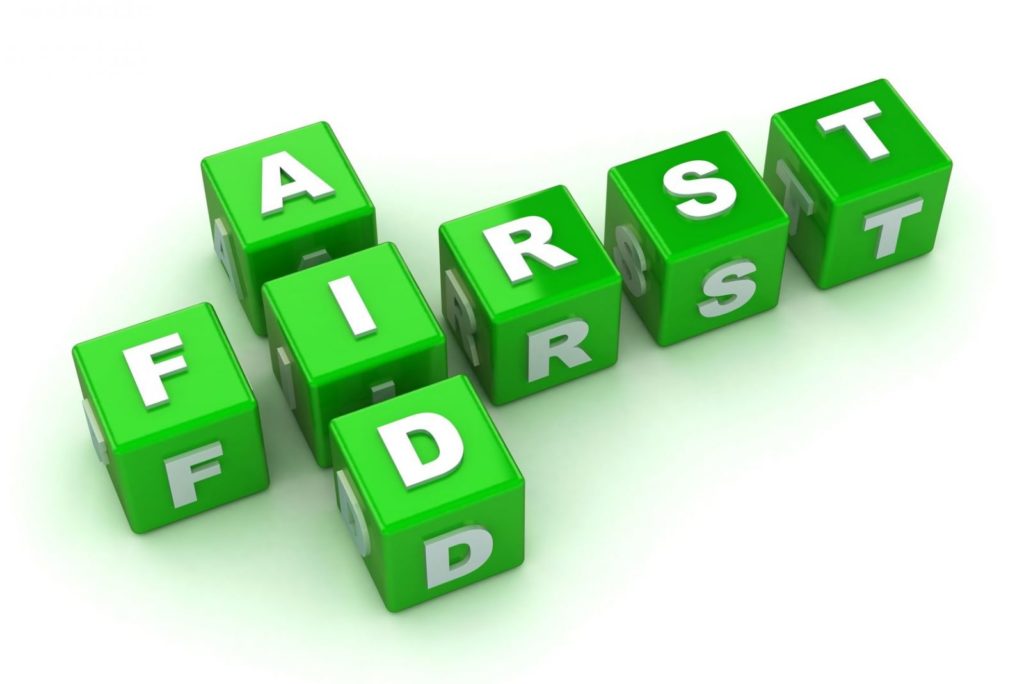
First Aid


Globally, millions of people die each year as a result of accidents or serious injury. Unfortunately,  many of those deaths could have been prevented had first aid been administered at the scene immediately, before the emergency services arrived. First aid, or emergency first aid is the care that is given to an injured or sick person prior to treatment by medically trained personnel.
many of those deaths could have been prevented had first aid been administered at the scene immediately, before the emergency services arrived. First aid, or emergency first aid is the care that is given to an injured or sick person prior to treatment by medically trained personnel.
Some self-limiting illnesses or minor injuries may only require first aid intervention, and no further treatment. First aid generally consists of some simple, often life-saving techniques that most people can be trained to perform with minimal equipment. First aid usually refers to administration of care to a human, although it can also be done on animals. The aim of first aid is to prevent a deterioration of the patient’s situation, to aid recovery, and to preserve life. Technically, it is not classed as medical treatment and should not be compared to what a trained medical professional might do. First aid is a combination of some simple procedures, plus the application of common sense.
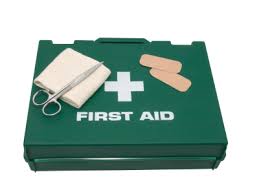 |
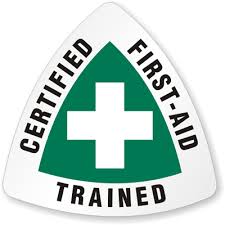 |
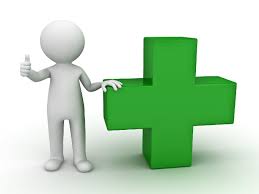 |
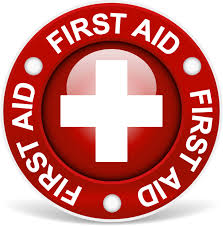 |
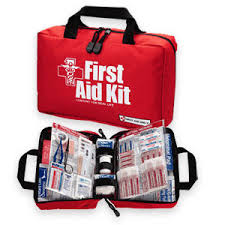 |
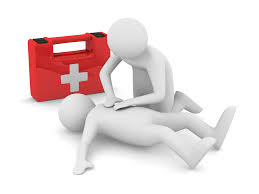 |
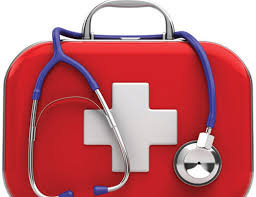

ABC (and sometimes D) The most common term referred to in first aid is ABC, which stands for Airway, Breathing, and Circulation. In fact, the term also is commonly used among emergency health professionals. The D stands for Deadly bleeding or Defibrillation.
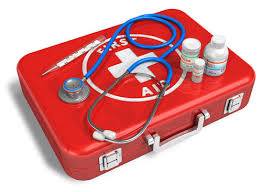
How to evaluate and maintain the ABC of a patient depends on how well trained the first aider is. As soon as ABC has been secured the first aider can then focus on any additional treatments.
Some organizations use the 3Bs system, which stands for Breathing, Bleeding, and Bones, while others use 4Bs, which stands forBreathing, Bleeding, Brain, and Bones.
ABCs and 3Bs are taught to be carried out in order of sequence. However, there are times when the first aider may be performing two steps at the same time, as might be the case when providing rescue breathing and chest compression to a casualty who is not breathing and has no pulse.
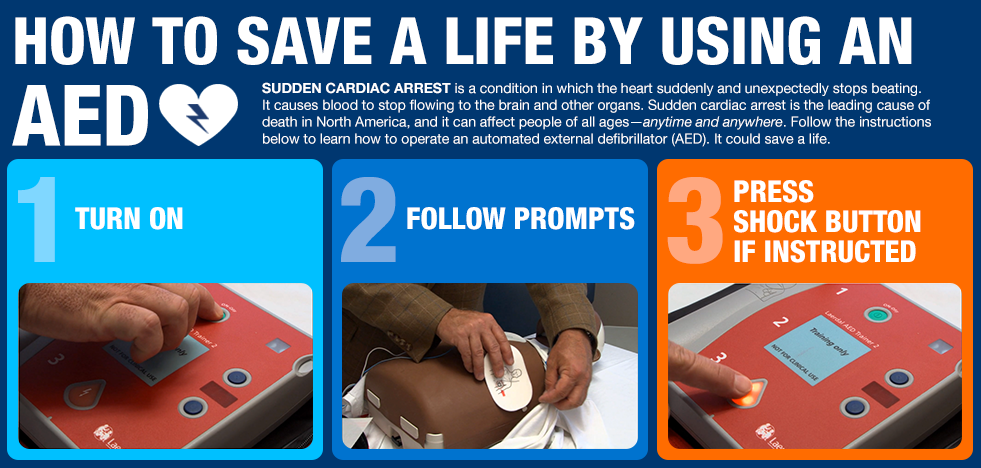
To understand how AEDs work, it helps to understand .
The heart has an internal electrical system that controls the rate and rhythm of the heartbeat. With each heartbeat, an electrical signal spreads from the top of the heart to the bottom. As the signal travels, it causes the heart to contract and pump blood. The process repeats with each new heartbeat.
Problems with the electrical system can cause abnormal heart rhythms called arrhythmia (ah-RITH-me-ahs). During an arrhythmia, the heart can beat too fast, too slow, or with an irregular rhythm. Some arrhythmia can cause the heart to stop pumping blood to the body. These arrhythmia cause SCA.
The most common cause of SCA is an arrhythmia called ventricular fibrillation (v-fib). In v-fib, the ventricles (the heart’s lower chambers) don’t beat normally. Instead, they quiver very rapidly and irregularly.
In people who have either of these arrhythmia, an electric shock from an AED can restore the heart’s normal rhythm. Doing CPR (cardiopulmonary resuscitation) on someone having SCA also can improve his or her chance of survival.
AEDs are lightweight, battery-operated, portable devices that are easy to use. Each unit comes with instructions, and the device will even give you voice prompts to let you know if and when you should send a shock to the heart.
Learning how to use an AED and taking a CPR course are helpful. However, if trained personnel aren’t available, untrained people also can use an AED to help save someone’s life.
You often find AEDs in places with large numbers of people, such as shopping malls, golf courses, businesses, airports, airplanes, casinos, convention centers, hotels, sports venues, and schools. You also can purchase a home-use AED.
An automated external defibrillator (AED) is a portable device that checks the heart rhythm and can send an electric shock to the heart to try to restore a normal rhythm. AEDs are used to treat sudden cardiac arrest (SCA).
SCA is a condition in which the heart suddenly and unexpectedly stops beating. When this happens, blood stops flowing to the brain and other vital organs.
SCA usually causes death if it’s not treated within minutes. In fact, each minute of SCA leads to a 10 percent reduction in survival. Using an AED on a person who is having SCA may save the person’s life.
Using an automated external defibrillator (AED) on a person who is having sudden cardiac arrest (SCA) may save the person’s life.
The most common cause of SCA is an arrhythmia called ventricular fibrillation (v-fib). In v-fib, the ventricles (the heart’s lower chambers) don’t beat normally. Instead, they quiver very rapidly and irregularly.
Another arrhythmia that can lead to SCA is ventricular tachycardia. This is a fast, regular beating of the ventricles that may last for a few seconds or much longer.
In people who have either of these arrhythmia, an electric shock from an AED can restore the heart’s normal rhythm (if done within minutes of the onset of SCA).
If someone is having SCA, you may see him or her suddenly collapse and lose consciousness. Or, you may find the person unconscious and unable to respond when you call or shake him or her.
The person may not be breathing, or he or she may have an abnormal breathing pattern. If you check, you usually can’t find a pulse. The person’s skin also may become dark or blue from lack of oxygen. Also, the person may not move, or his or her movements may look like a seizure (spasms).
An AED can check the person’s heart rhythm and determine whether an electric shock is needed to try to restore a normal rhythm.
Sudden Cardiac Arrest (SCA) is an abrupt loss of pulse and consciousness caused by an unexpected failure in the heart’s ability to effectively pump blood to the brain and around the body. It is usually caused by life-threatening arrhythmia’s, abnormalities in the heart’s electrical system.
The sudden cardiac arrest victim collapses, losing their pulse, consciousness, and the ability to breathe. All of this happens quickly and without treatment the victim will be dead within a few minutes.
What is the difference between a heart attack and a Sudden Cardiac Arrest (SCA)?
Basically a heart attack is a plumbing problem and a Sudden Cardiac Arrest (SCA) is an electrical problem. The heart has many vessels and can operate when some are blocked but a Sudden Cardiac Arrest in like a complete electrical blackout.
Basically a heart attack is a plumbing problem and a Sudden Cardiac Arrest (SCA) is an electrical problem. The heart has many vessels and can operate when some are blocked but a Sudden Cardiac Arrest in like a complete electrical blackout.
The only definitive treatment for victims of Sudden Cardiac Arrest (SCA) is defibrillation. Sudden Cardiac Arrest (SCA) usually happens without warning and the majority of people have no previously recognized symptoms of heart disease. For the best chance of survival from Sudden Cardiac Arrest (SCA) caused by Ventricular Fibrillation (VF), Automatic External Defibrillators (AED) should be used within the first 3-5 minutes after collapse. Currently less than 5% of victims survive largely because a Defibrillator does not arrive in time. An AED can increase the survival rate to 50% and in some situations like commercial airlines around 70%.
Just as seat belts or airbags do not save every life in a traffic accident, an AED defibrillator will not save every person who suffers a Sudden Cardiac Arrest (SCA) however many lives could be saved if more people had access to an Automatic External Defibrillator (AED).
AED’s were designed to be used by non-medical people with little or no previous experience or instruction.
In a perfect world everyone should have CPR and AED training, however modern AEDs are designed to be used by any motivated bystander, regardless of training. The devices advise the user about how to apply the device and whether or not to administer a shock. Most of the time, the AED will advise the user with voice prompts to administer CPR, depending on the needs of the victim, however all AED’s supplied by Australian Defibrillators have a voice coach to instruct you during these vital minutes.
From the time that the event occurs to the time that medical help arrives is critical. The instructions from the AED are keeping you productive and giving the patient the very best chance of survival until help, which is on the way, has arrived. The national average response time for an ambulance in Australia is 10-12 minutes and even longer in rural or remote areas. This is the critical time when defibrillation is needed for the patient to survive.
Automated external defibrillators (AEDs) are lightweight, battery-operated, portable devices that are easy to use. Sticky pads with sensors (called electrodes) are attached to the chest of the person who is having sudden cardiac arrest (SCA).
The electrodes send information about the person’s heart rhythm to a computer in the AED. The computer analyzes the heart rhythm to find out whether an electric shock is needed. If a shock is needed, the AED uses voice prompts to tell you when to give the shock, and the electrodes deliver it.
Using an AED to shock the heart within minutes of the start of SCA may restore a normal heart rhythm. Every minute counts. Each minute of SCA leads to a 10 percent reduction in survival.
Learning how to use an AED and taking a CPR (cardiopulmonary resuscitation) course are helpful. However, if trained personnel aren’t available, untrained people also can use an AED to help save someone’s life.
Some people are afraid to use an AED to help save someone’s life. They’re worried that something might go wrong and that they might be sued.
Facility owners who are thinking about buying an AED should provide initial and ongoing training to likely rescuers (usually people who work in the facility). Also, it’s important to properly maintain an AED and notify local emergency officials of its location.
Before using an automated external defibrillator (AED) on someone who you think is having sudden cardiac arrest (SCA), check him or her.
If you see a person suddenly collapse and pass out, or if you find a person already unconscious, confirm that the person can’t respond. Shout at and shake the person to make sure he or she isn’t sleeping.
Never shake an infant or young child. Instead, you can pinch the child to try to wake him or her up.
Call emergency or have someone else call emergency. If two rescuers are present, one can provide CPR (cardiopulmonary resuscitation) while the other calls emergency and gets the AED.
Check the person’s breathing and pulse. If breathing and pulse are absent or irregular, prepare to use the AED as soon as possible. (SCA causes death if it’s not treated within minutes.)
If no one knows how long the person has been unconscious, or if an AED isn’t readily available, do 2 minutes of CPR. Then use the AED (if you have one) to check the person.
After you use the AED, or if you don’t have an AED, give CPR until emergency medical help arrives or until the person begins to move. Try to limit pauses in CPR.
After 2 minutes of CPR, you can use the AED again to check the person’s heart rhythm and give another shock, if needed. If a shock isn’t needed, continue CPR.
Make sure the sticky pads have good connection with the skin. If the connection isn’t good, the machine may repeat the phrase “check electrodes.”
If the person has a lot of chest hair, you may have to trim it. (AEDs usually come with a kit that includes scissors and/or a razor.) If the person is wearing a medication patch that’s in the way, remove it and clean the medicine from the skin before applying the sticky pads.
Remove metal necklaces and underwire bras. The metal may conduct electricity and cause burns. You can cut the center of the bra and pull it away from the skin.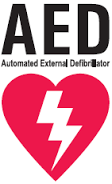
Check the person for implanted medical devices, such as a pacemaker or implantable cardiovascular defibrillator. (The outline of these devices is visible under the skin on the chest or abdomen, and the person may be wearing a medical alert bracelet.) Also check for body piercings.
Move the defibrillator pads at least 1 inch away from implanted devices or piercings so the electric current can flow freely between the pads.
Check that the wires from the electrodes are connected to the AED. Make sure no one is touching the person, and then press the AED’s “analyze” button. Stay clear while the machine checks the person’s heart rhythm.
If a shock is needed, the AED will let you know when to deliver it. Stand clear of the person and make sure others are clear before you push the AED’s “shock” button.
Start or resume CPR until emergency medical help arrives or until the person begins to move. Stay with the person until medical help arrives, and report all of the information you know about what has happened.
Yes from 1 year + with pediatric pads and in accordance with the following guide. The AED when analyzing infants or children will automatically calculate and adjust the shock voltage to suit the patients’ weight and chest wall thickness.
It’s highly unlikely if you use it properly. The electric shock is programmed to go from one pad to the other (biphasic) through the victim’s chest. Basic precautions, such as not touching the victim during the shock, ensure the safety of rescuers and bystanders. The AED instructs when it’s safe or not safe to touch the patient.
